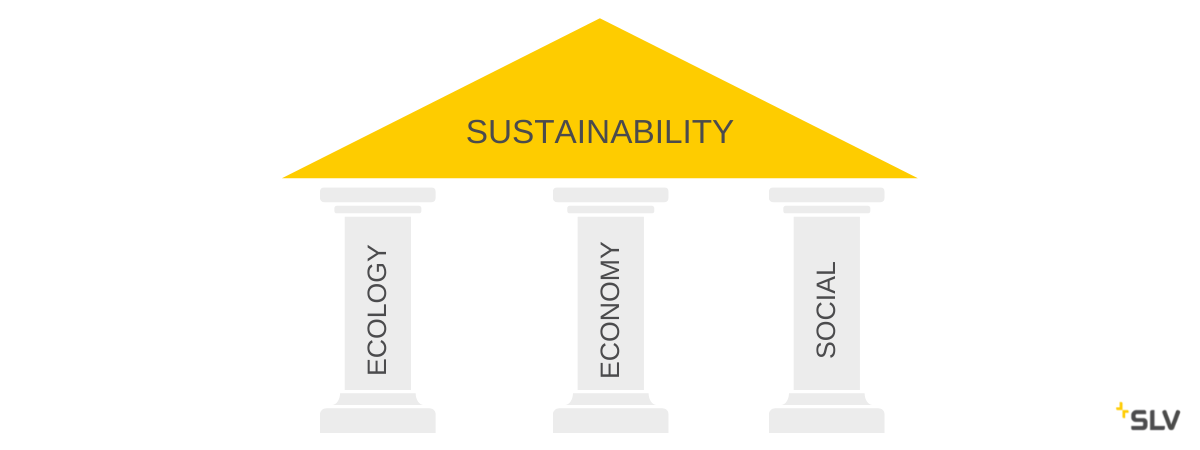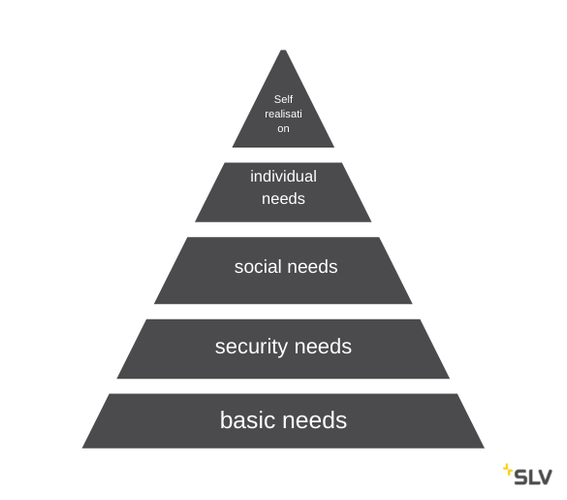/f/113144/1900x466/d19fe94dcc/all_slv_good-light-solutions_nachhaltigkeit-bedeutung-stage_1900x466px.jpg)
Sustainability & its significance: development, concept and future
In bygone days, it was the student movements who toppled the old order, by aggressive and tumultuous means. Nowadays it is not just young people, but also older people who are taking to the streets to raise awareness of climate change, the extinction of species and the unequal distribution of goods and food. In this regard, there are many different discussions taking place within society. Here, one issue stands out above all others: that of sustainability
Sustainability and environmental awareness are also becoming of increasing importance for companies such as ourselves. Many companies are building on the 3-pillar model, and are developing sophisticated sustainability strategies. But how did the concept of sustainability come to the fore, and to what exactly does the term refer? This article is dedicated to this question, and also explains the 3-pillar model.
/f/113144/827x668/222df8b424/all_slv_relaunch_icon-image-history_827x668px.png)
If you are looking for a definition of the term sustainability, you need look no further than the Brundtland Report, published in 1987. There, sustainable development is defined as meeting the needs of the present without compromising the ability of future generations to meet their own needs.
On the basis of this beautiful guiding principle, laid out in the Brundtland Report, three strategies arose:
-
Sufficiency in consumption
-
Efficient handling of resources
-
Energy and consistency in the recycling of resources
As a model for this, the "three pillars of sustainability" were previously drawn on.
The three pillars of sustainability: environmental protection, economic viability, and social equity
The "3 Pillars Model" was discussed on an international level at the World Summit in South Africa/Johannesburg in 2002. Since then, it has provided a benchmark and served as a guideline for sustainability and adherence to its principles. Inspired by the World Summit, conventions were adopted in a host of other countries, which also subscribe to the three pillars – including in Germany. The primary objective of the 3-pillar model is to bring social, economical, and environmental developments into harmony, and consequently, to act in a more sustainable manner.

1st pillar: environmental protection (ecology)
Ecology is the science that studies the reciprocal relationships between living things and their environment. As such, it is a sub-field of biology, and deals with the survival of living creatures within their environment. This can, of course, also be applied to human beings. Human beings exercise a major influence on the environment and on available resources.
The goal of ecological sustainability is the preservation of resources and a conscious approach to the use of available reserves, such as wood. However, the preservation of diverse species and organisms is also a point of focus, just as much as the reduction of CO2 emissions, pollutants, and hazardous substances.
2nd pillar: social equity
We will now consider the second pillar. As has already been established, we humans are gregarious (herd) animals. As such, we survive best in groups, which are essentially pursuing the same goal. This does not mean that the members of our group cannot be completely different, e.g. when it comes to our values, lifestyle, or mentality.
Ultimately, we are all socialised in different ways. Our respective social behaviour is a psychological, cultural, and in some cases, innate phenomenon. In this regard, our upbringing as children plays a decisive role. These differences are something we should be free to express – and yet still be able to survive effectively.
The Universal Declaration of Human Rights, adopted in 1948 by the United Nations, are built on precisely this notion. One of the factors addressed in the declaration is the issue of social sustainability. The central message is this: human dignity is inviolable. Alongside fair pay, the common good of society is paramount. This includes the promotion of apprenticeships and training courses. Forced labour, exploitation, and child labour cannot be reconciled with social sustainability.
3rd pillar: economic viability
The final pillar within the 3-pillar model is economics. The objective is to study the value of products, services, and goods transport. Here a differentiation is made between political economics and business economics. As the current actual status, the present economy is always compared to the normative economy – i.e., how things should be. Economic studies of society are thus highly dependent on the respective conditions within the environment. The reason for this is that statistics regarding criminality, education, family, law etc. all make a contribution.
Summary of the 3-Pillar Model
The 3-pillar model provides a guideline for both companies and the state. This enables improved sustainability – including within companies. Here it is important that the three pillars are considered equally, with preference given to neither environmental protection, social equity, nor economic viability.
/f/113144/827x668/297b717a04/all_slv_relaunch_icon-image_827x668px_critics.png)
The 3-pillar model is therefore increasingly viewed as a guiding principle for a sustainability strategy. However, it is often apparent that companies may talk a lot about green strategies, while actually doing very little in practice. Nevertheless, we humans are dependent on nature, which is why large companies, in particular, have a responsibility to honour our natural surroundings.
At the same time, human beings' dependency on resources comes down to the fact that there is **no equilibrium between resource and population growth**. Nature regulates itself and, in this regard, is much superior to human beings.
The lifespan of raw materials is therefore no longer sufficient to fulfil demand. As such, one point of criticism is the fact that the three pillars are only theoretically equal, when in fact considerable priority has been given to the economic viability, especially in the past.

Supporting the environment through the right purchasing behaviour
You can also protect the environment by adapting how you purchase. Companies that value sustainability, are making a major contribution on the path to climate neutrality. When purchasing, you can take into account the extent to which other companies value the environment. Here are a few tips to help you check wither a business operates in a sustainable manner:
- Look out for trusted seals of approval; Organic and Fair Trade labels do not necessarily mean that products are sustainable.
-
Unimportant product characteristics are often positively emphasized. For example, in the EU, the production of baby bottles containing BPA is prohibited, and yet many companies base their advertising on the fact that their products are BPA-free.
- With regard to companies that refer to themselves as sustainable, you should examine the products and look out for seals of approval or certifications.
- Maintain a healthy level of scepticism and scrutinise products and companies. If in doubt, you can ask more detailed questions by contacting the customer service of the company in question, and thus protect yourself against purchases that are harmful towards the environment.
Sustainability is a big word, which is hotly discussed within the public forum. However, each individual can make a contribution to protecting the environment – not only through sustainable purchasing, but also by correctly separating waste or through sustainable consumption, for example.
 SLV SUBSIDIARIES
SLV SUBSIDIARIES













 SLV INTERNATIONAL
SLV INTERNATIONAL


/f/113144/373x296/2643ead660/all_slv_good-light-solutions_teaser-sustainability-at-work_373x296px.jpg)

